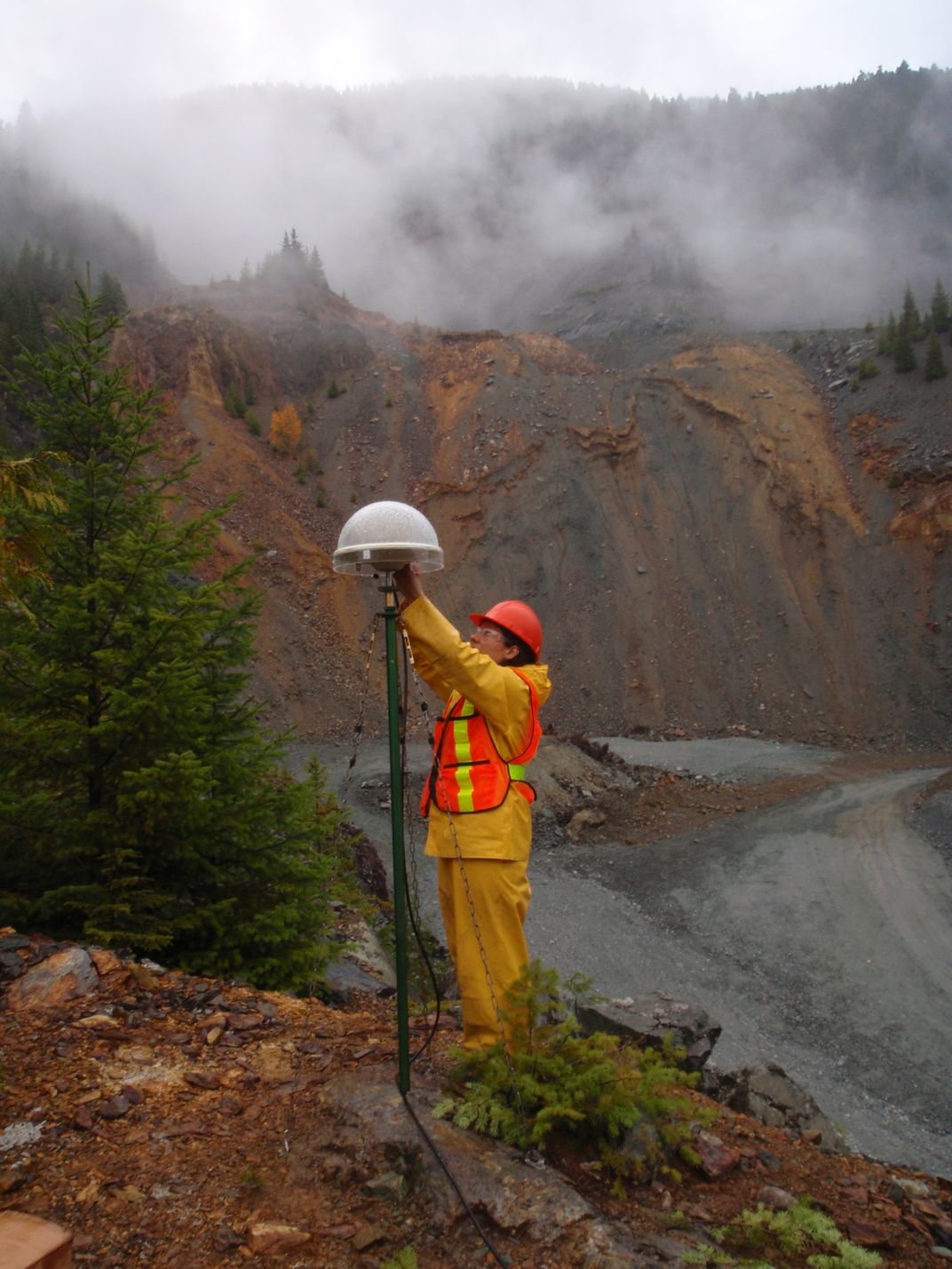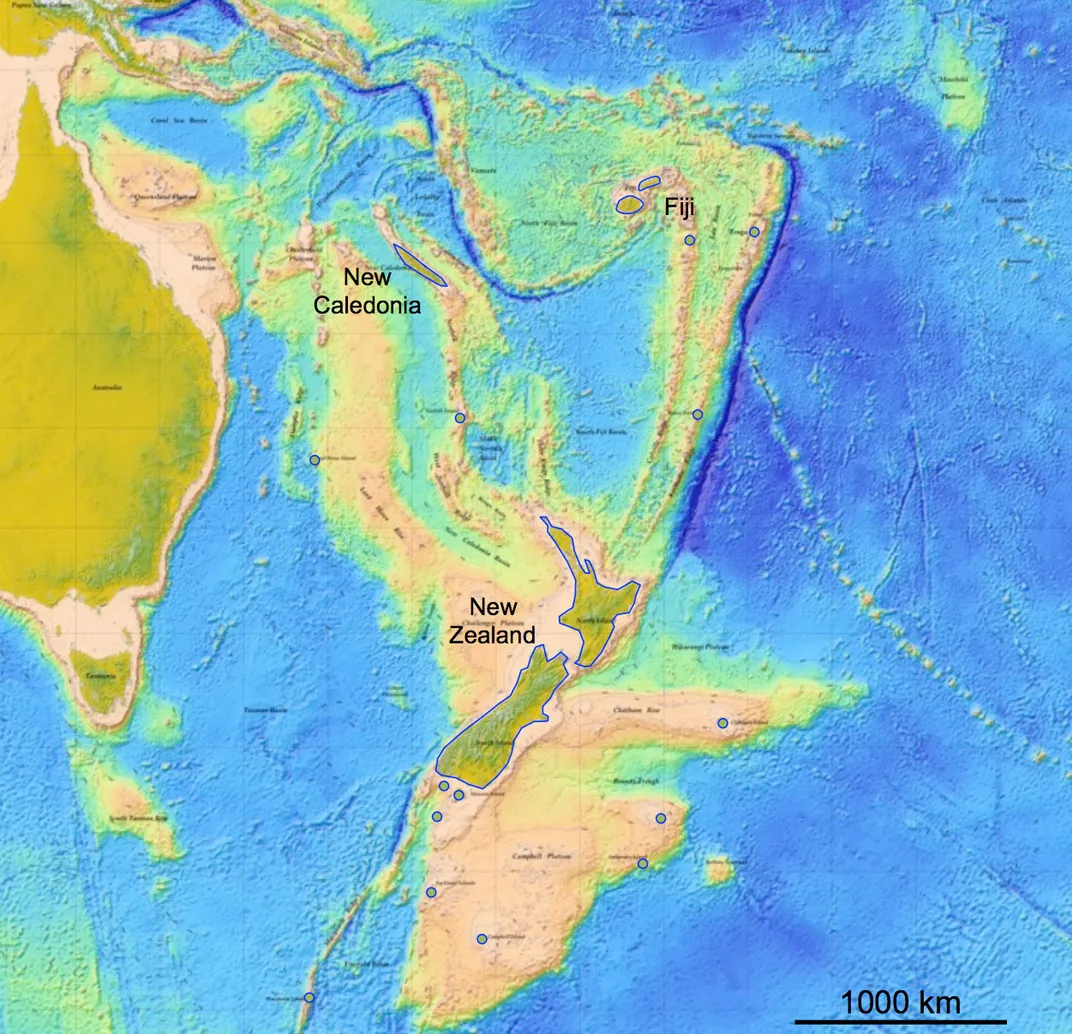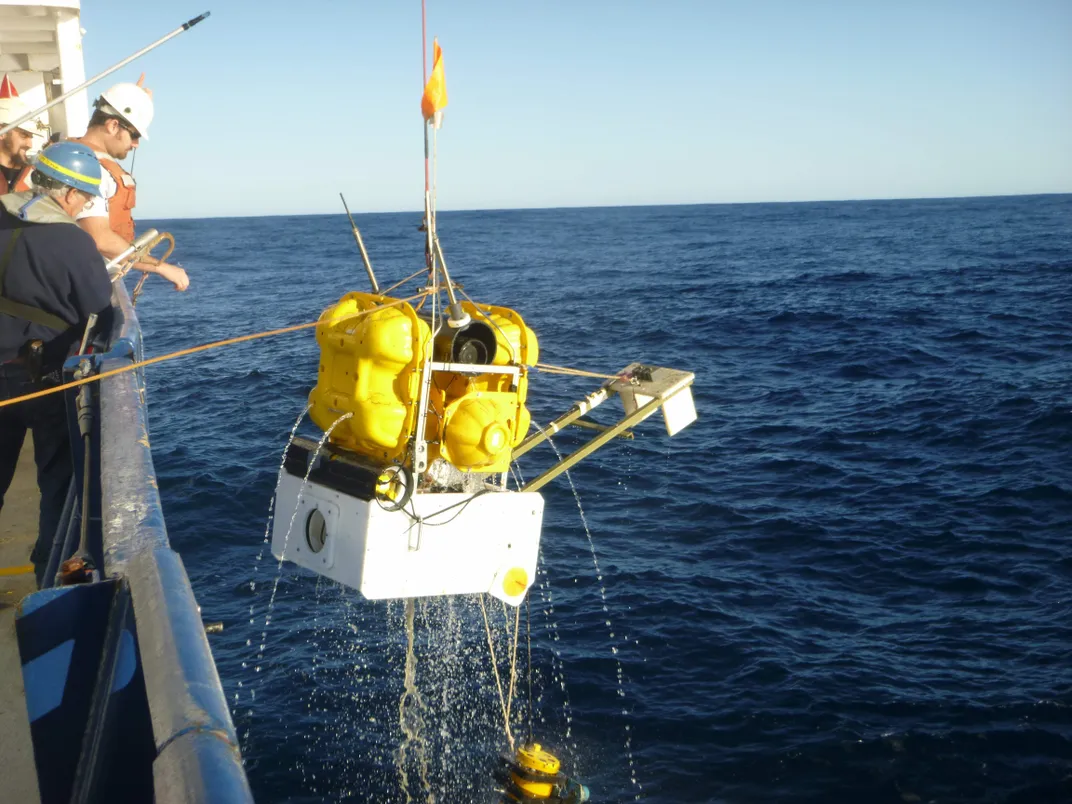Slow Earthquakes Are a Thing
Slow earthquakes regularly move more earth than deadly fast quakes, but no one feels a thing
/https://tf-cmsv2-smithsonianmag-media.s3.amazonaws.com/filer/37/a4/37a4a280-4cb0-473d-9364-6a8c832b3700/seattle-flickrpapalars-by-nd.jpg)
On March 11, 2011, a magnitude 9.0 earthquake shook Japan for nearly six minutes, triggering a tsunami and a nuclear disaster that collectively killed nearly 20,000 people. But beneath the surface, the tectonic plates off the eastern coast of Japan had quietly started shifting long before the shaking began. In February 2011, two quieter earthquakes began slowly creeping along the Japan Trench toward the point where the massive, megathrust quake would erupt a month later.
These strange, quiet quakes are called slow slip events, or slow earthquakes—umbrella terms for the spectrum of subdued moving and shaking that happens at the boundary between tectonic plates. Discovered only in the last 20 years, slow earthquakes are still a seismic puzzle. They can shift tectonic plates as much or more than a magnitude 7 quake. But whereas a regular earthquake suddenly releases seismic waves that can topple buildings, a slow earthquake lasts days, months, sometimes even years—and people nearby never feel a thing.
These imperceptible rumblings are thought to have preceded massive quakes that ripped through Japan, Mexico and Chile—but we don’t know if slow earthquakes triggered the massive temblors or even how they relate to their faster, more dangerous counterparts. Decoding when, where and why slow earthquakes strike could help us understand the most dangerous fault zones on our planet—and, possibly even help us forecast devastating quakes and tsunamis before they take their toll.
“It’s a true mystery,” says Heidi Houston, a geophysicist at the University of Washington in Seattle. “We studied regular earthquakes for decades and we understand some things about them—and then this process comes along and it’s the same in some aspects, and so very different in some other aspects.”

Before the late 1990s, geoscientists thought they had a grasp on how the jigsaw puzzle of tectonic plates covering the Earth’s surface move and fit together. They assumed that as one slab of the Earth’s crust slides past another, the plates either steadily creep past each other or become stuck, accumulating stress until they explosively slip free in an earthshaking quake that ripples from the fault zone.
But starting right around the new millennium, a flurry of scientific publications described a new class of recurring and widespread slow earthquakes observed on opposite edges of the Pacific Rim.
The first report of a clearly defined slow slip event came from the Cascadia Subduction Zone, which is formed by the Juan de Fuca plate pushing beneath the North America plate from northern California to Vancouver Island. There, the regions some 20 miles beneath the surface are softened by the depths and high temperatures and slide smoothly past each other. But shallower, brittle portions of the sliding tectonic plates can become stuck together until the stuck region ruptures in a giant megathrust. Cascadia hasn’t unleashed a giant quake since the 1700s—but rumblings in the seismic community suggest the next big one is coming.
In 1999, geophysicist Herb Dragert with the Geological Survey of Canada noticed that some continuous GPS monitoring stations on southern Vancouver Island and the Olympic Peninsula were behaving oddly. Seven of them jumped about a quarter of an inch over several weeks in the opposite direction of the plate's normal movement. This kind of backwards jump is what you would expect to see in an earthquake—but there had been no detectable shaking.
“Herb was very worried at first—he thought something was wrong with the data,” says Kelin Wang, a scientist at the Geological Survey of Canada who worked with Dragert and geoscientist Thomas James to decode this puzzle. “He tried everything to prove himself wrong, and everything failed.”
That’s because there was nothing wrong with the data. The team soon realized they were seeing the North America plate and the Juan de Fuca plate gently slipping as the patches where they were stuck together unzipped. At 18 to 24 miles beneath the surface, these stuck patches were above the high-temperature, high-pressure region where the plates slide smoothly, but below the locked, earthquake-generating portions of the subduction zone. And it turns out that the sticky, intermediate zone slips on a schedule, about every 14 months.
Around the same time, across the Pacific Ocean, a seismologist with the National Research Institute for Earth Science and Disaster Prevention noticed low-frequency vibrations that spread periodically from seismometer to seismometer across the Nankai Trough subduction zone in Southwest Japan. Kazushige Obara, who is now at the University of Tokyo's Earthquake Research Institute, observe that these rumblings started 21 miles beneath the surface and could go on for days, resembling the tremor that accompanies volcanic eruptions—but this wasn’t a volcanic area.
When Obara and Dragert met at a conference, they realized that the slow slip events Dragert detected by GPS and the non-volcanic tremor Obara picked up on seismometers could both be signs of the same type of imperceptible plate movement in subduction zones.
“I was struck by their similar time of duration, identical alignments with the strike of their respective subduction zones, similar depths of occurrence,” Dragert says in an email.
So when Dragert got back to Canada, his colleague Garry Rogers, a now-retired seismologist who worked with Dragert at the Geological Survey of Canada, hunted through boxes of old seismograms to try to identify the tremor’s telltale waveform. They found it every time the GPS units recorded a slow slip event.
“The hairs were standing up on the back of my neck,” Rogers says. “That was a very exciting day.”
Soon after, Obara matched a slip to the tremor he was seeing in Japan. Now, we know that there are different kinds of slow earthquakes that can happen with or without tremor, at different depths, and for different durations. They’ve quietly slipped through subduction zones off the coasts of Alaska, Costa Rica, Mexico, New Zealand and even through the vertical plate interface of the San Andreas Fault, all without detection (unless you’re a satellite or a seismometer).
“We really had no idea that there was this whole rich spectrum and family of fault slip events,” says Laura Wallace, a geophysicist at the University of Texas at Austin who studies slow earthquakes off the coast of New Zealand. “It’s really transformed our understanding of how faults behave at plate boundaries and how plate motion is accommodated. It’s a pretty big deal.”

But investigating this rich spectrum of slow slip events is a challenge—partly because they’re so subtle, and partly because they’re largely inaccessible.
“It’s just damned difficult to look at something that’s that deep in the Earth,” Rogers says. Especially if that something is also deep under the sea, like the slow slip events that shift the Hikurangi trench off the east coast of New Zealand’s North Island up to several inches every few years.
So in 2014, Wallace got creative. She led the deployment of a network of underwater pressure gauges to detect any vertical movement of the seafloor that might signal a slow slip event. She timed it just right: The pressure gauges detected the ocean floor beneath them heaving up and down, which Wallace and her team calculated to mean the plates had slipped about 4 to 8 inches over the span of a few weeks. Unlike the slow slips that occur deep beneath the surface in Cascadia and Japan, these slips originated as little as 2.5 to 4 miles beneath the sea floor—which means that slow earthquakes can happen in depths and under conditions far different than the ones they were originally discovered in.
What’s more, the section of trench that Wallace’s pressure gauges caught slipping was the same section that generated two back-to-back tsunamis in 1947 that crumbled a cottage, dumped two men on an inland road, and somehow killed no one.
“If we can understand that relationship between slow slip events and the damaging earthquakes on subduction zones, eventually we might be able to use these things in a forecasting manner,” she says.
But first, we have to get better at detecting and monitoring them, which is just what Demian Saffer at the Pennsylvania State University is trying to do. Over the past six years, he’s worked with scientists in Japan and Germany to set up two borehole observatories—basically, collections of instruments sealed into drill holes deep under the sea floor near the Nankai Trench in Southwest Japan—the place where Obara first discovered tremor.
From these borehole observatories as well as from data collected by a seafloor network of sensors, his team has collected preliminary evidence for slow slips that coincide with swarms of small, low frequency earthquakes. Saffer suspects these slow slow slips may be releasing pent-up stress at the plate boundary that would otherwise rupture in a catastrophic quake.
He compares this phenomenon to a slipping clutch that builds up a little bit of stress, but then fails every few months to years. “What we’re seeing is very preliminary, but we are seeing indications of fairly common slow events that appear to be relieving stress on the plate boundary, which is kind of cool,” he says. He will present these results at the American Geophysical Union meeting this fall.

Wallace, Saffer and a large international team of scientists are currently planning an expedition for 2018 to drill into the Hikurangi trench to set up similar observatories. And as they drill spins into the oceanic crust, they plan to collect samples of the rocks that make up the tectonic plates to understand what it is about the minerals and the fluids in the subduction zone that allows slow slippage to occur.
“There’s a lot of theories about what kinds of physical conditions might lead to this slow slip behavior,” Wallace explains. She says one of the most popular ones is that excess fluids within the fault zone weaken it and allow it to slip more easily. “But we still don’t really understand that,” she adds.
Back where it all began, at the Cascadia subduction zone, the University of Washington’s Heidi Houston is also working to understand the basic mechanisms that underlie slow earthquakes. “What processes keep them slow?” Houston says. “That’s the central mystery of them.”
Houston recently discovered that as tremors rumble beneath fault zones, forces as mundane as the tides can strengthen them. She continues to investigate how the depth, fluid pressure, and minerals deposited at the boundary between tectonic plates change the properties of slow earthquakes.
Like the other seismologists, geoscientists and geophysicists who have gravitated towards slow earthquakes since they were discovered, the thrill of what remains unknown motivates Houston—as does the possibility that understanding slow earthquakes might one day give us insight into deadly quakes.
"I’m having the time of my life studying this process," she says.